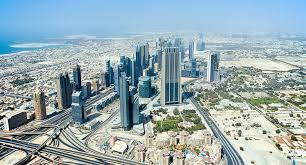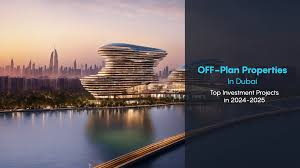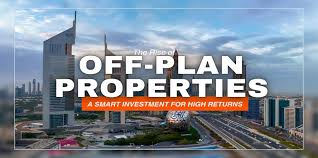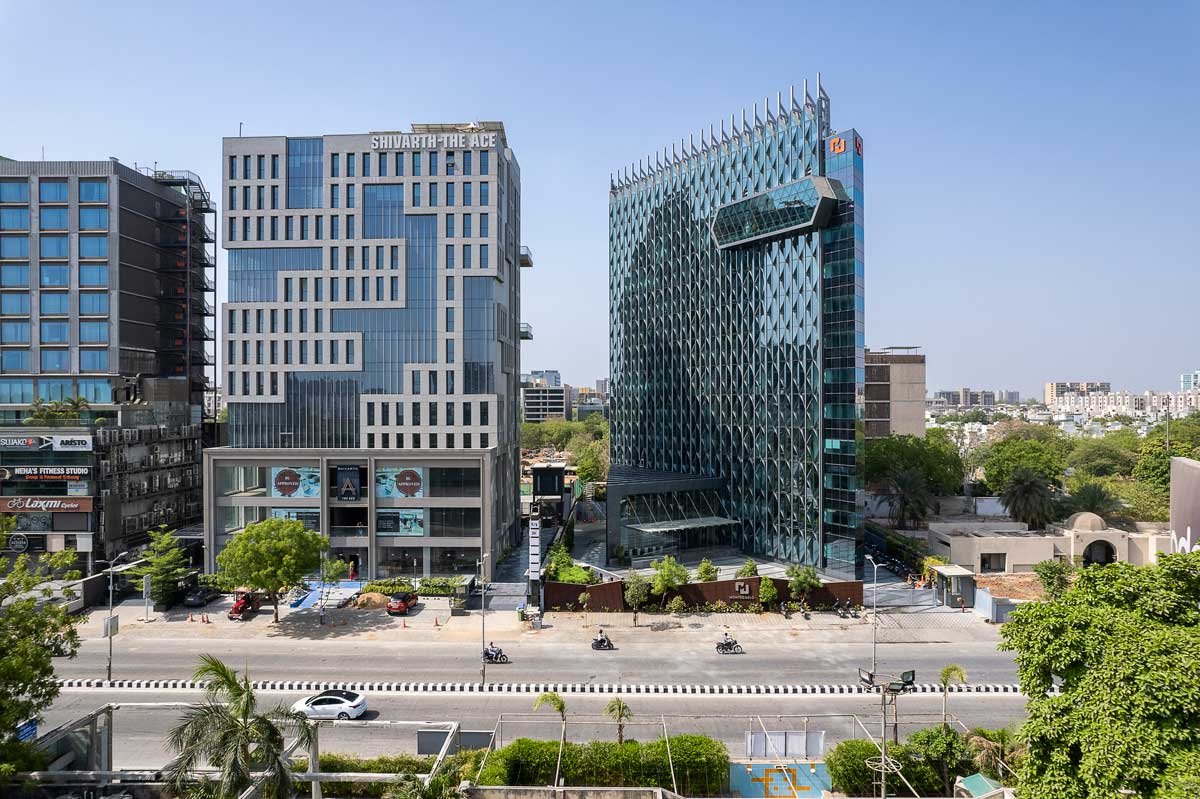Now Reading: Top Benefits of Investing in UAE Off-Plan Properties in 2025
-
01
Top Benefits of Investing in UAE Off-Plan Properties in 2025
Top Benefits of Investing in UAE Off-Plan Properties in 2025

Table of Contents
The United Arab Emirates (UAE) real estate market continues to captivate global investors, with off-plan properties—those purchased before completion—emerging as a top choice for U.S. investors in 2025. With a projected market value of $700 billion and an 8% annual growth rate through 2030, the UAE offers a tax-friendly environment and high returns, per mordorintelligence.com. Off-plan investments in cities like Dubai, Abu Dhabi, and emerging emirates such as Ajman and Ras Al Khaimah accounted for 56% of Dubai’s Q1 2025 transactions, per posts on X. This article outlines the top benefits of investing in UAE off-plan properties for U.S. investors, highlighting financial advantages, flexibility, and growth potential, while addressing U.S. tax considerations.
Why Off-Plan Properties in the UAE?

Off-plan properties allow investors to buy real estate during the pre-construction or construction phase, often at lower prices than completed units. The UAE’s appeal for U.S. investors includes:
- Tax Advantages: No capital gains tax (CGT), property tax, or personal income tax on rental income below AED 375,000 ($102,000), unlike U.S. CGT (15–20%) and property taxes (1–2%), per tax.gov.ae. A 9% Corporate Tax (CT) applies above this threshold, offset by the U.S.-UAE Double Taxation Agreement (DTA), per irs.gov.
- Foreign Ownership: 100% ownership in freehold areas since 2002, enabling U.S. investors to own properties in prime locations like Dubai’s Palm Jumeirah or Abu Dhabi’s Saadiyat Island, per emirates.estate.
- Visa Incentives: Golden Visas for investments over AED 2 million ($545,000) provide residency, per ica.gov.ae.
- Market Growth: Dubai’s 36.5% transaction surge in 2024 (AED 761 billion) and Abu Dhabi’s 34.5% Q1 2025 growth ($6.9 billion) signal strong demand, per globalpropertyguide.com and mediaoffice.abudhabi.
Off-plan properties amplify these benefits, offering unique opportunities for U.S. investors seeking high returns in a dynamic market.
Top Benefits of Investing in UAE Off-Plan Properties

1. Lower Purchase Prices and High Capital Appreciation
Off-plan properties are typically priced 20–30% lower than completed units, allowing U.S. investors to enter the market at a discount, per damacproperties.com. As projects near completion, values often rise significantly due to demand and infrastructure development.
- Example: A one-bedroom apartment in Dubai’s Jumeirah Village Circle (JVC) bought off-plan for AED 800,000 ($218,000) in 2023 appreciated to AED 1.04 million ($283,000) by completion in 2024, a 30% gain, per bhomes.com. In 2025, similar projects like Emaar’s The Oasis are expected to see 20–30% appreciation, per emirates.estate.
- U.S. Advantage: UAE’s tax-free CGT maximizes profits, though U.S. investors must report gains to the IRS, where long-term CGT (15–20%) applies, offset by DTA credits, per irs.gov.
- Action: Target off-plan projects in Dubai South or Abu Dhabi’s Al Ghadeer, where prices start at AED 500,000 ($136,000). Verify developers via Dubai’s Real Estate Regulatory Authority (RERA) or Abu Dhabi Real Estate Centre (ADREC).
2. Flexible Payment Plans
Off-plan properties come with developer-backed payment plans, spreading costs over 3–7 years, often with low initial deposits (5–20%), per topluxuryproperty.com. This reduces upfront capital needs, making investments accessible for U.S. investors.
- Example: DAMAC’s Lagoons in Dubai offers a 70/30 plan, with 70% paid during construction and 30% at handover, requiring a 20% deposit (AED 160,000 on an AED 800,000 unit), per damacproperties.com. Abu Dhabi’s Al Raha Beach projects provide 5-year plans, per savills.ae.
- U.S. Advantage: Flexible payments align with U.S. investors’ cash flow, especially for those diversifying portfolios. Payments in AED (pegged at 1 USD = 3.67) minimize exchange risk, per xe.com.
- Action: Choose RERA-registered developers like Emaar or Aldar for secure payment plans. Retain Sales and Purchase Agreements (SPAs) for IRS reporting via Form 8938 if assets exceed $50,000.
3. High Rental Yields and Demand
UAE off-plan properties in high-demand areas deliver rental yields of 6–15%, outpacing U.S. markets like New York (3–5%), per properties.market. Dubai’s tourism boom (18.7 million visitors in 2024) and Abu Dhabi’s cultural appeal drive short-term rental demand, per gulfnews.com.
- Example: Off-plan studios in Dubai’s Arjan (AED 500,000) yield 10–15% via Airbnb, while Abu Dhabi’s Yas Island apartments (AED 1 million) offer 6–8% long-term yields, per savills.ae. Ajman’s Al Nuaimiya studios (AED 300,000) achieve 12–15%, per smartzone.ae.
- U.S. Advantage: UAE’s tax-free rental income below AED 375,000 boosts returns, though IRS Form 1040 reporting is required. Income above AED 375,000 faces 9% CT, with Form 1116 credits, per tax.gov.ae.
- Action: Target short-term rentals in Dubai’s Downtown or Ajman’s Emirates City. Register with local tourism departments (e.g., Ajman’s ATDD) and file UAE CT returns by February 28, 2025, if applicable.
4. Customization and Modern Design
Off-plan buyers can often customize finishes, layouts, and smart home features, aligning properties with market trends like IoT integration and sustainability, per damacproperties.com. This enhances rental and resale appeal in UAE’s smart cities.
- Example: Emaar’s The Oasis in Dubai allows buyers to select eco-friendly materials and AI-powered systems, increasing rental premiums by 10–15%, per emirates.estate. Abu Dhabi’s Masdar City off-plan units feature solar panels, boosting value by 5–10%, per gulfbusiness.com.
- U.S. Advantage: Customized properties attract high-net-worth tenants, maximizing yields. U.S. investors can deduct customization costs from U.S. taxes under IRS Schedule E, per irs.gov.
- Action: Work with developers like ANAX Holding for sustainable designs. Verify customization terms in SPAs and retain invoices for IRS documentation.
5. Developer Incentives and Discounts
Developers offer incentives like waived registration fees, free service charges for 1–3 years, or furniture packages to attract off-plan buyers, per bhomes.com. These reduce ownership costs and enhance returns.
- Example: In Dubai, Reportage Properties waives 4% DLD fees (AED 32,000 on an AED 800,000 unit), while Aldar in Abu Dhabi offers two years of free service charges (AED 10,000–20,000), per topluxuryproperty.com. Ajman developers provide furniture packages worth AED 20,000, per smartzone.ae.
- U.S. Advantage: Incentives lower initial costs, improving ROI. U.S. investors can deduct service charges from rental income on IRS Schedule E, per irs.gov.
- Action: Negotiate incentives with developers like DAMAC or Reportage. Register properties with DLD or ADREC to secure benefits and retain records for U.S. tax audits.
6. Early Access to Prime Locations
Off-plan investments secure properties in high-growth areas before prices escalate, per emirates.estate. Dubai’s 2040 Urban Master Plan and Abu Dhabi’s Vision 2030 prioritize infrastructure, boosting property values in new hotspots.
- Example: Dubai South, near Al Maktoum Airport, saw off-plan prices rise 20% from 2022–2024, with 15% growth expected in 2025, per damacproperties.com. Abu Dhabi’s Saadiyat Island off-plan units gained 10% in 2024, per savills.ae.
- U.S. Advantage: Early access locks in lower prices, maximizing tax-free UAE gains. IRS Form 8949 is required for U.S. CGT reporting on sales, per irs.gov.
- Action: Target off-plan projects in Dubai’s MBR City or Ras Al Khaimah’s Al Marjan Island. Verify locations via local real estate authorities.
Key Considerations for U.S. Investors
- Risks:
- Construction Delays: Off-plan projects may face delays, though RERA’s escrow accounts protect payments, per dxbinteract.com.
- Oversupply: Dubai’s 76,000 units in 2025 may depress prices by 10–15% in some areas, per gulfnews.com. Abu Dhabi faces 104,000 sqm office oversupply by 2026, per cushwake.ae.
- Market Volatility: Economic shifts could impact demand, though UAE’s 6.2% GDP growth mitigates risks, per colife.ae.
- Tax Compliance: Report UAE income to the IRS via Form 1040, with Form 1116 for CT credits and Form 8938 for assets over $50,000, per irs.gov. UAE’s 5% VAT on commercial properties and 9% CT apply, per tax.gov.ae.
- Regulatory Compliance: AML laws require KYC, with fines up to AED 500,000 for non-compliance, per gtlaw.com. Off-plan contracts must be RERA-registered, per adlrer.gov.ae.
- Currency Stability: AED pegged at 1 USD = 3.67 minimizes exchange risk, per xe.com.
Conclusion
Investing in UAE off-plan properties in 2025 offers U.S. investors lower prices, flexible payments, high yields (6–15%), customization, incentives, and access to prime locations, per emirates.estate. With no CGT, Golden Visa eligibility, and a booming market, the UAE outshines U.S. markets like Miami (4–6% yields). However, U.S. investors must navigate IRS reporting, oversupply risks, and AML compliance. By targeting projects from RERA-registered developers like Emaar, DAMAC, or Aldar in hotspots like Dubai South, Saadiyat Island, or Al Nuaimiya, and consulting tax advisors, U.S. investors can maximize returns. Swatch more like this
read more here: How to Buy Freehold Property in the UAE Legally





















